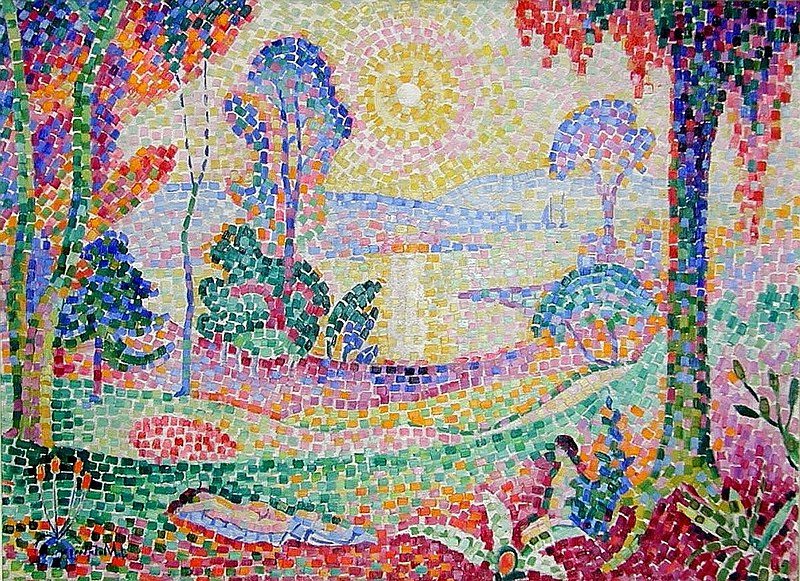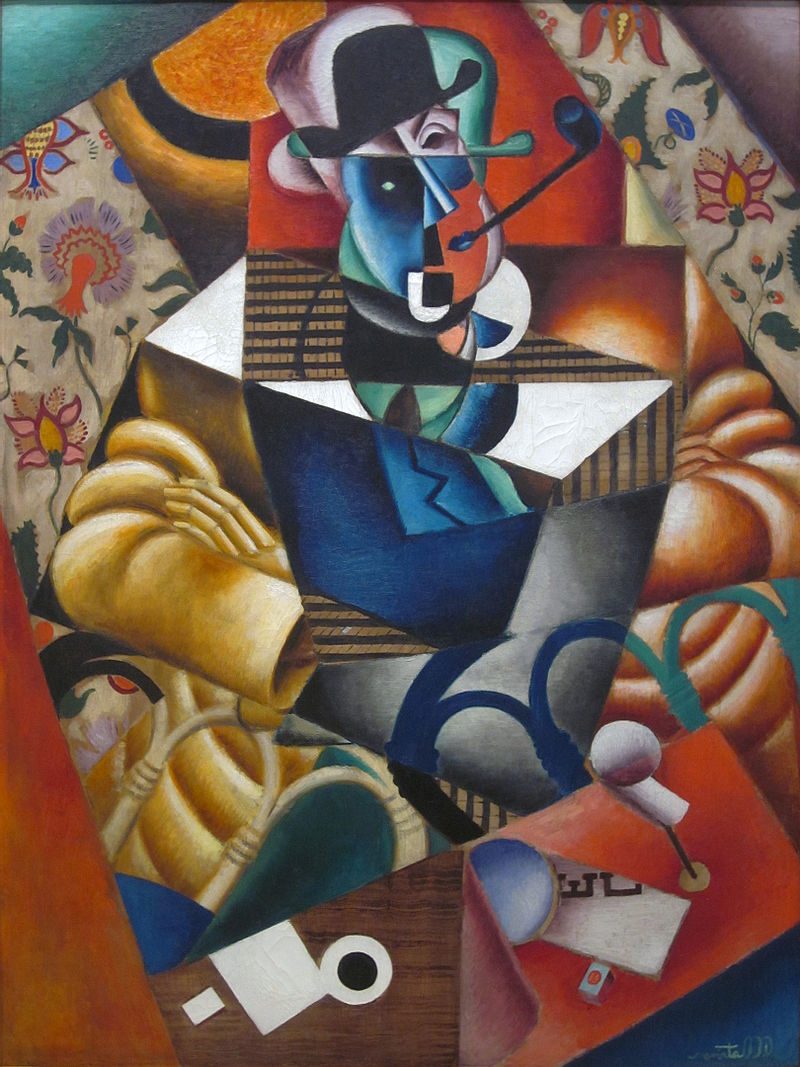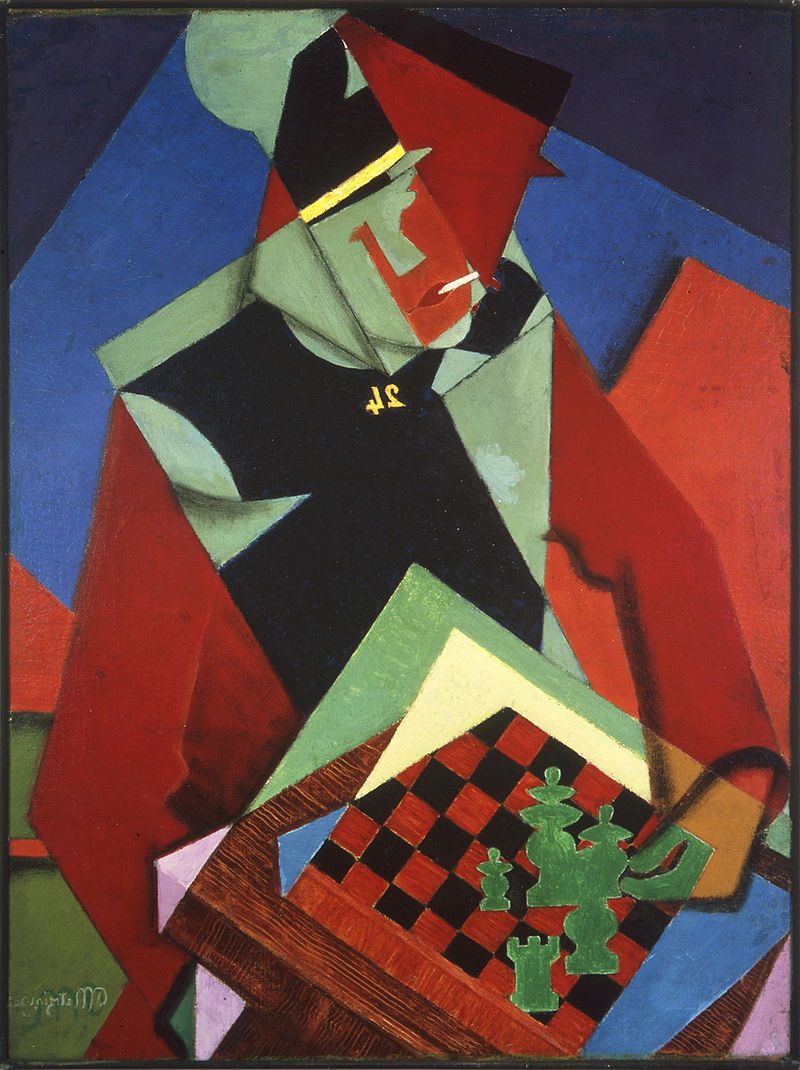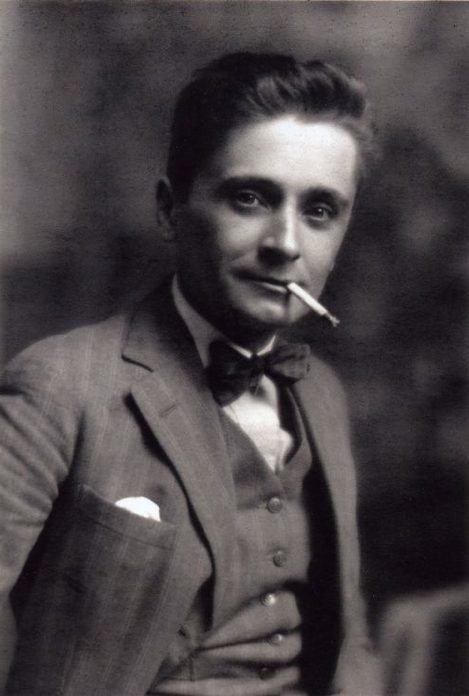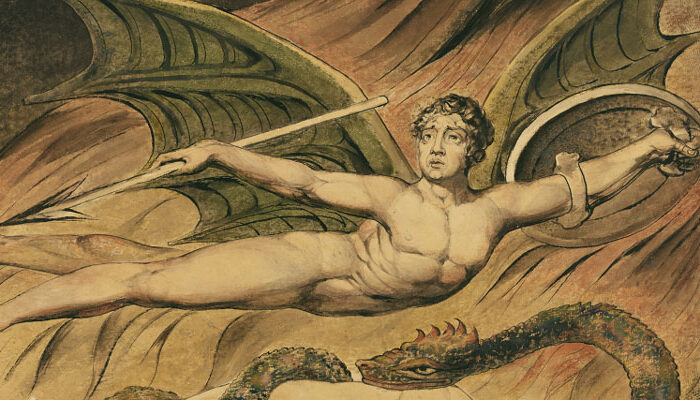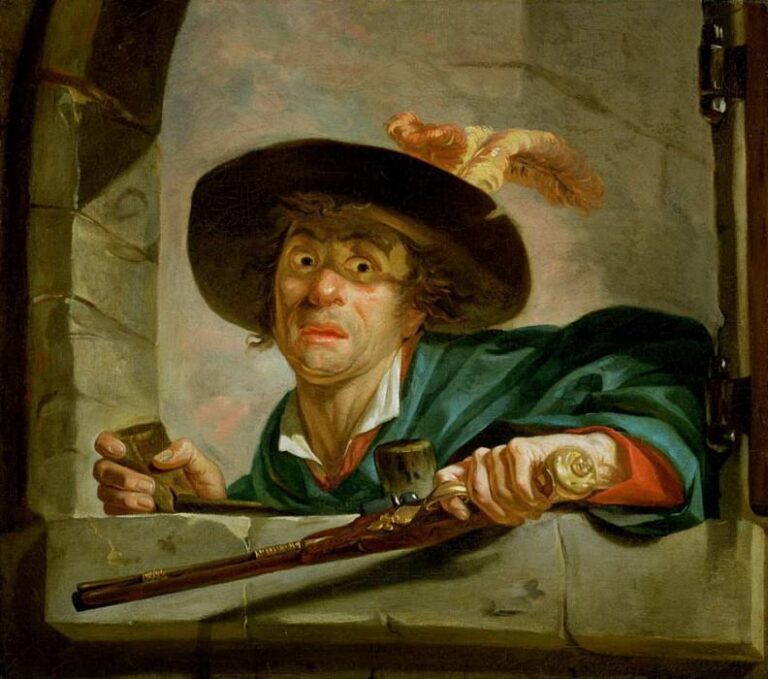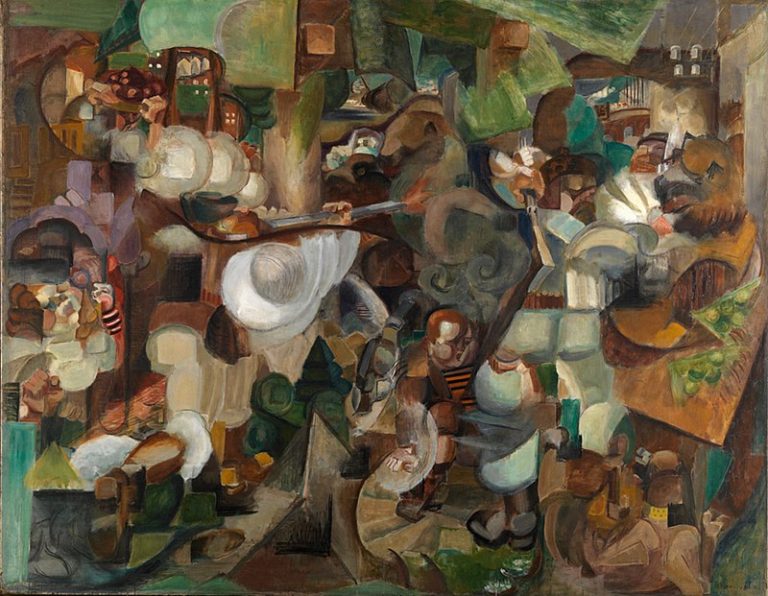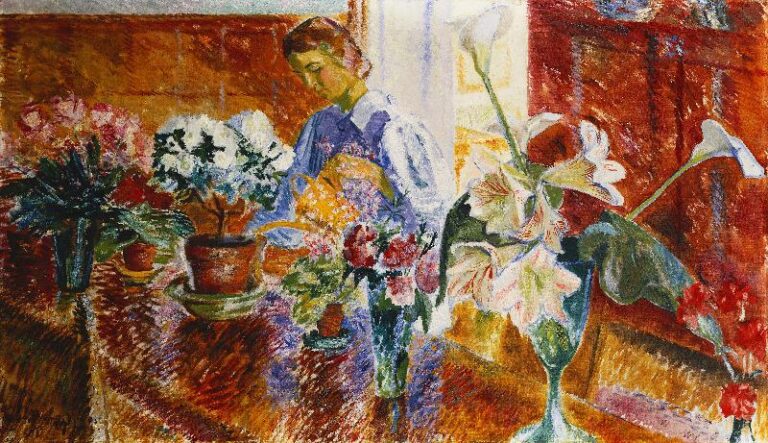Jean Metzinger Painter: Cubist Pioneer and Theorist
Born: 24 June 1883, Nantes, France
Death: 3 November 1956, Paris, France
Art Movement: Neo-Impressionism, Cubism
Nationality: French
Influenced By: Georges Seurat and Henri-Edmond Cross
Institution: École des Beaux-Arts, Nantes
Jean Metzinger Painter: Cubist Pioneer and Theorist
Life and Career of Jean Metzinger
Jean Metzinger was a key figure in early 20th-century French painting. He started as a Neo-Impressionist and later became a pioneer of Cubism. His work and writings helped shape modern art.
Early Life and Neo-Impressionist Phase
Jean Metzinger was born in 1883 in Nantes, France. He moved to Paris at age 20 to study medicine. Soon after, he switched to painting.

Paysage coloré aux oiseaux aquatiques (1907) by Jean Metzinger
In Paris, he met artists Robert Delaunay and Max Jacob.
Metzinger’s early works from 1900 to 1904 showed the Neo-Impressionist style. He was inspired by Georges Seurat and Henri-Edmond Cross. His paintings used small dots of color to create images.
He also tried Fauvist styles with bright colors. During this time, Metzinger began to make a name for himself in Paris art circles.
Cubist Evolution and Section d’Or Involvement
Around 1908, Metzinger started to explore Cubism. He broke away from traditional painting methods. His art became more abstract and geometric.
In 1910, he painted a Cubist portrait of poet Guillaume Apollinaire. This work was a milestone in Cubist art history. It helped bring Cubism to public attention.
Metzinger joined the Section d’Or group. These artists showed Cubist works in public salons. He co-wrote “Du Cubisme” with Albert Gleizes in 1912. This book explained Cubist ideas.
Later Years and Legacy
After World War I, Metzinger’s style changed. He moved away from strict Cubism. His paintings became more realistic but kept some Cubist elements.


In 1930, he wrote “Le Cubisme était né” about Cubism’s birth. He taught at academies in Paris and Bandol. Metzinger kept painting and writing until his death in 1956.
His legacy includes both his art and his writings. Metzinger helped explain and spread Cubist ideas. His work bridged different art movements in early 20th-century France.
Artistic Innovations and Theoretical Contributions
Jean Metzinger made key advances in painting styles and art theory in the early 20th century. He helped develop new approaches to color, form, and perspective that shaped modern art movements.
Development of Divisionism and Fauvism
Metzinger started his career exploring Divisionism, a technique using dots of pure color. He painted landscapes and portraits with small brushstrokes of bright hues. This style broke down forms into patches of color.
In the early 1900s, Metzinger moved toward Fauvism. He used bold, non-natural colors in his work. His Fauvist paintings had flatter forms and vivid tones. During this time, he focused on figure paintings and still lifes.
Metzinger’s work in these styles paved the way for his later Cubist art. He learned to fragment forms and use color in new ways.
Cubism: Faceting of Form and Mobile Perspective
Metzinger became a leader in Cubism around 1910. He broke objects into geometric shapes and planes. His paintings showed multiple views of a subject at once.


A key idea Metzinger used was “mobile perspective.” This meant showing different angles of an object in one image. He painted portraits and still lifes using this approach.
Metzinger’s Cubist works often kept some realistic elements. He mixed abstract forms with recognizable objects. This made his art more accessible to the public than some other Cubists.
Literary Works and Influence on Art Theory
In 1912, Metzinger co-wrote “Du Cubisme” with Albert Gleizes. This book was the first in-depth study of Cubist ideas. It explained the movement’s goals and methods.
The book talked about new ways to show space and time in art. It said paintings could show multiple views at once. This idea changed how people thought about art.
Metzinger also wrote poetry and essays about art. His writings helped spread Cubist ideas. They influenced other artists and critics of the time.
Iconic Works and Artistic Collaborations
Jean Metzinger created many notable paintings and worked closely with other Cubist artists. His art often blended math and science concepts with visual elements.
Salon d’Automne and Salon des Indépendants Exhibitions
Metzinger showed his work at major Paris art shows. The Salon d’Automne and Salon des Indépendants were key events for Cubists. His painting “Le goûter” (Tea Time) caused a stir at the 1911 Salon d’Automne. It showed a woman from multiple angles at once.


Another famous work, “La femme au cheval” (Woman with a Horse), appeared at the 1912 Salon des Indépendants. This large canvas mixed human and animal forms in a bold Cubist style.
These exhibits helped bring Cubism to the public eye. Metzinger’s art stood out for its bright colors and clear shapes.
Collaborations with Gleizes and Other Cubists
Metzinger worked closely with Albert Gleizes. In 1912, they wrote “Du Cubisme,” the first book about Cubist theory. This text was very important for the movement.
He also joined the Section d’Or group. Other members included Robert Delaunay and Juan Gris. They met at the Bateau-Lavoir studio in Paris.
Metzinger’s style was less extreme than Pablo Picasso’s. But he pushed Cubism in new directions. His art bridged early and later Cubist phases.
Influence of Mathematics and Science in Art
Math and science shaped Metzinger’s art deeply. He used geometry to create complex forms. His paintings often had a sense of movement and time.


“L’oiseau bleu” (The Blue Bird) shows this approach. The bird seems to fly across the canvas. Shapes overlap and shift.
Metzinger saw links between art and new ideas in physics. He tried to show multiple views of objects at once. This fit with theories about space and time.
His dealer, Léonce Rosenberg, liked how Metzinger mixed art and science. This mix became a key part of Metzinger’s unique style.
Frequently Asked Questions
Jean Metzinger was a key figure in the Cubist movement. He created influential artworks and wrote important theoretical texts about Cubism.
What are the defining characteristics of Jean Metzinger’s Cubism artwork?
Metzinger’s Cubist paintings featured fragmented forms and multiple viewpoints. He used geometric shapes and muted colors to break down objects and figures.
His works often had a more structured, mathematical approach compared to other Cubists. Metzinger focused on precise compositions and clearly defined planes.
How did Jean Metzinger contribute to the development of the Cubist movement?
Metzinger co-wrote “Du Cubisme” in 1912, the first major book about Cubism. This text helped explain and promote Cubist ideas.
He was part of the Section d’Or group of Salon Cubists. Metzinger’s paintings and writings influenced many other artists to explore Cubist techniques.
Which artworks did Jean Metzinger create during the peak of his career?
“Tea Time” (1911) is one of Metzinger’s most famous paintings. It shows a woman having tea, depicted through fractured geometric forms.
“Woman with a Horse” (1911-1912) is another important work. This large painting combines Cubist elements with a recognizable subject.
How is Metzinger’s approach to Cubism distinct from that of his contemporaries like Robert Delaunay?
Metzinger’s style was more controlled and analytical than some other Cubists. He kept his forms more recognizable and used a more limited color palette.
Unlike Delaunay’s focus on color and light, Metzinger emphasized structure and geometry in his compositions.
Can you elaborate on the philosophy and theoretical underpinnings behind Jean Metzinger’s paintings?
Metzinger believed Cubism could show multiple viewpoints of an object at once. He saw this as a way to capture the true nature of things beyond surface appearances.
His work explored ideas about time, space, and perception. Metzinger wanted to challenge traditional ways of seeing and representing the world.
What are some of the most well-known prints created by Jean Metzinger, and what themes do they explore?
Metzinger created prints of some of his paintings, like “The Blue Bird” (1913). These prints often featured similar themes to his paintings.
He explored topics like the female form, still lifes, and landscapes in his prints. Metzinger used print-making to make his art more accessible to a wider audience.

